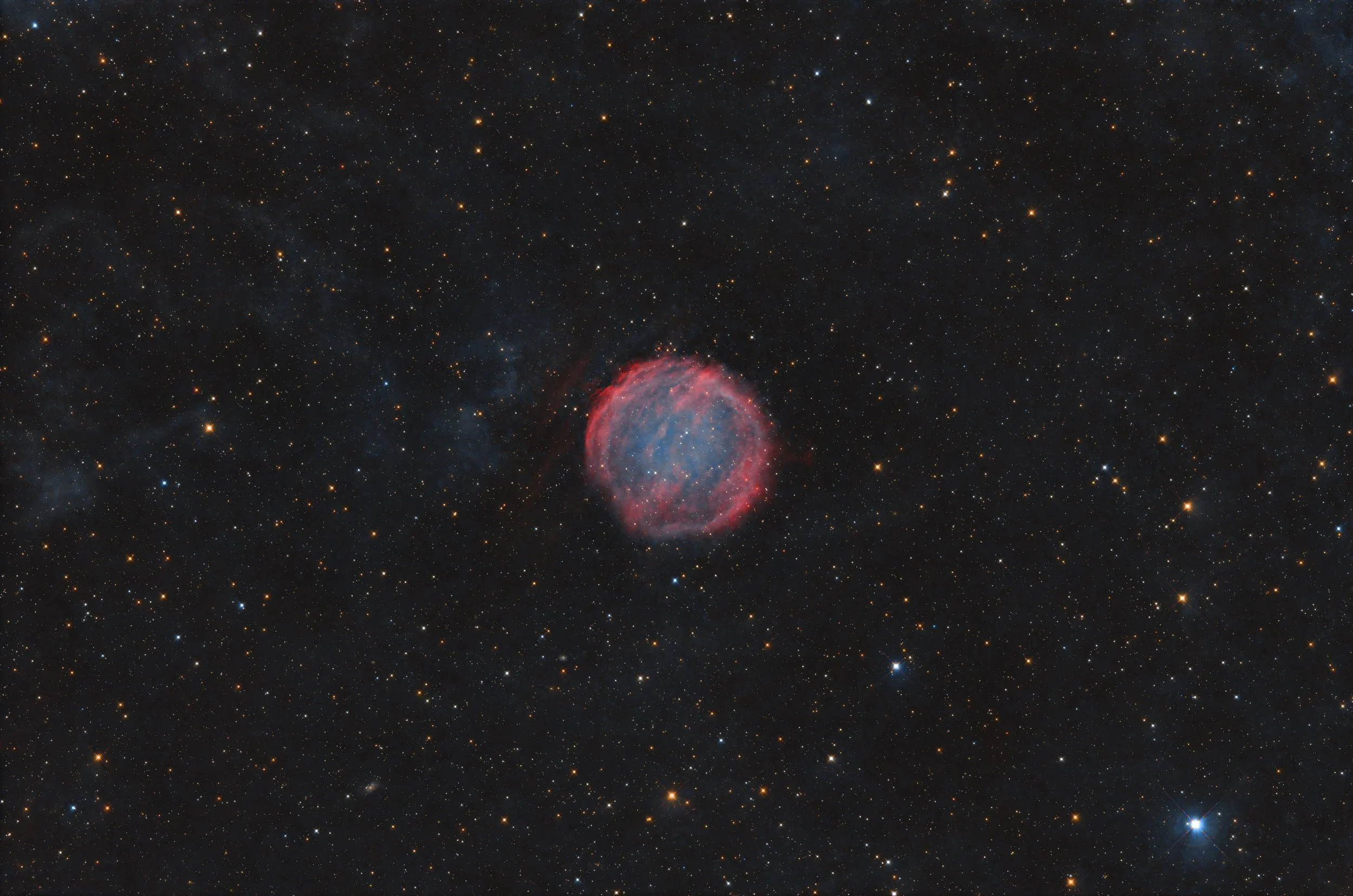
AAPOD2 Image Archives
PuWe 1 or PN G158.9+17.8 in HOO with LRGB Stars
In the cosmic tapestry of New Year's Eve, PuWe 1, also known as PN G158.9+17.8, emerges as a celestial timepiece in the constellation Cassiopeia. This captivating planetary nebula, resembling an intricate hourglass suspended in the vastness of space, captures the essence of our earthly countdown to a new year.
The hourglass shape of PuWe 1 becomes a metaphor for the passage of time, each grain of celestial sand representing a moment in the cosmic journey. The central star, having exhausted its nuclear fuel, sheds its outer layers in a mesmerizing dance, creating the delicate structure that enchants astronomers and stargazers alike.
As we stand on the threshold of the new year, PuWe 1 invites us to reflect on the year that has passed, just as the sands of time gracefully slip through the celestial hourglass. The intricate details of this planetary nebula serve as a reminder that, much like the cosmic dance unfolding within PuWe 1, our own lives are part of a grand celestial ballet.
So, let us gaze into the cosmic hourglass of PuWe 1 on this New Year's Eve, appreciating the beauty of the celestial clockwork and embracing the promise of new beginnings as the clock strikes midnight in the cosmos.
Purgathofer-Weinberger 1
Purgathofer-Weinberger 1, PuWe1 ( PN G 158.9 + 17.8 ) is a large, circular planetary nebula in the constellation of Lynx.
PuWe1 was discovered by Alois Purgathofer and Ronald Weinberger in 1980 on the Palomar Deep Sky Survey prints. The nebula is one of the largest planetary nebulae visible in our skies, with a diameter of 20 arc minutes. PuWe1 is also one of the nearest known planetaries with a distance of only about 1200 light years.
This image taken over several nights in March-April 2021.
R-channel - 30 x 150 sec. bin 1x1;
G-channel - 30 x 150 sec. bin 1x1;
B-channel - 30 x 150 sec. bin 1x1;
Ha- 88 x 600 sec. bin 2x2;
OIII- 40 x 600 sec. bin 2x2.
Total integration time about 25:05 hours.
My setup: Telescope 8" Celestron Schmidt-Cassegrain (SCT) CPC800 GPS (XLT) on the equatorial wedge, focal reducer Starizona Night Owl 0.4х, Feq=864mm, camera Starlight Xpress Trius SX694, SX mini filter wheel, filters Astrodon LRGB E-series gen.2, Astrodon Ha 5nm, Astrodon OIII 3nm.
Capture and processing software: MaxIm DL6, PHD2, PixInsight, StarTools, Photoshop CC, Zoner photo studio 14.
North at the top.
Copyright: Boris Vladimirovich



